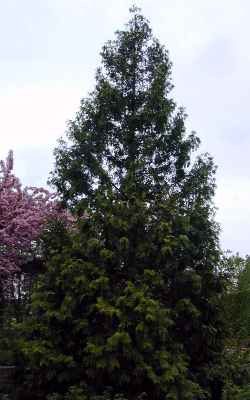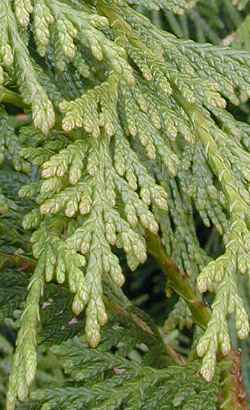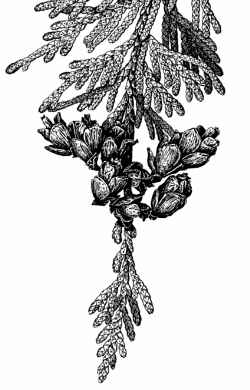Sunset®: 2-9,15-17, 21-24
USDA: 2 - 7
Heat Tolerance: Afternoon shade in hot areas
Sun Exposure: Full sun, part sun tolerated
Origin: Pacific Coast of North America, from southeastern Alaska, southward to central California, in moist mature forest at elevations below 5000 feet (1500 m)
Growth Habits: Large evergreen tree with a narrow pyramidal crown, 70 to 100 feet tall (21-30 m) or more (to 200 feet - 70 m); tapering trunk 2 to 4 feet in diameter (60-120 cm) or more, with fibrous, red-brown to gray bark; scale-like, flattened leaves 0.05 to 0.1 inches long (1.5-3 mm) with a tansy-like smell when crushed
Watering Needs: Moist soil in humid environment
Propagation: Named cultivars are propagated by heeled cuttings, wild plants by seeds

There are many named cultivars with varied size, shaped and foliage color.

Fruiting Habits:
Ovoid cone, 0.5 inch long (1.2 cm), borne upright on the branches with leathery, red-brown scales
Desert-Tropicals is dedicated to provide gardening advice, gardening ideas, and information about flower of all kind for landscape and collections.We try to check carefully the identification of the plants on the illustrations as well as the other information from the page, but occasionally errors do occur. if you notice anything that needs to be changed please contact us.Thanks.
© 1998-2020 Philippe Faucon, All Rights Reserved.
